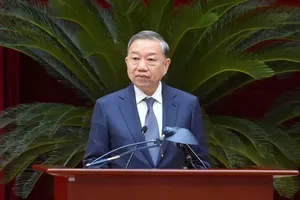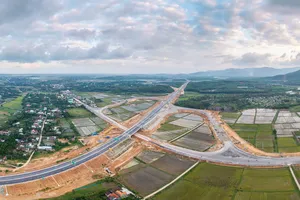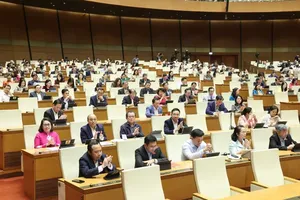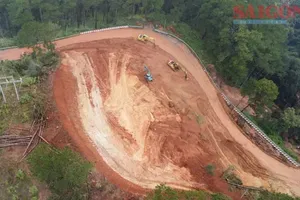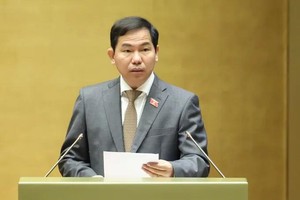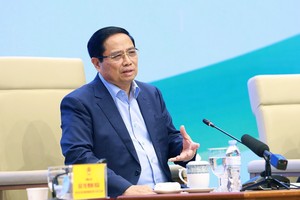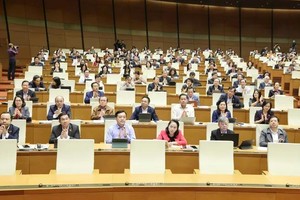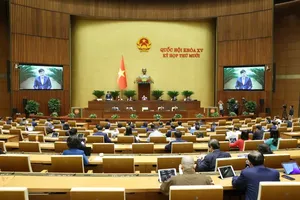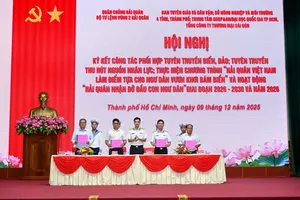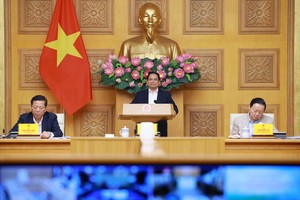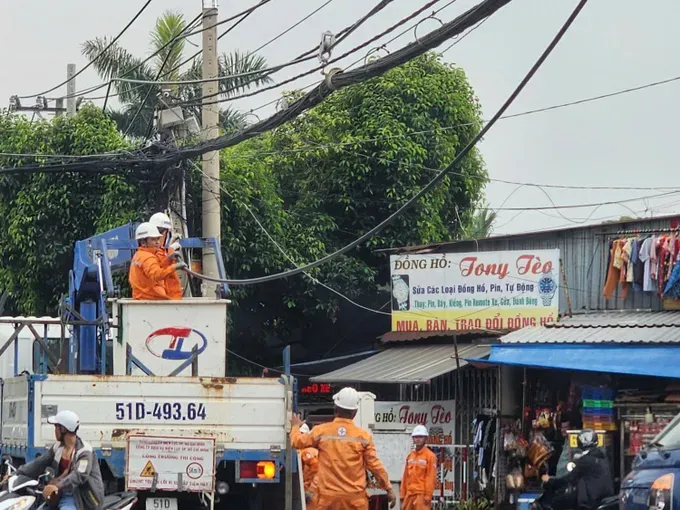
Impact of power outages
According to National Electricity System and Electricity Market Operation Company Limited (NSMO), the Northern region of Vietnam has faced a new wave of severe heat since early August 2025, following a heatwave that began in late July. In Hanoi, temperatures approached 40 Celsius degrees during the first week of August, with Lang station recording 39.1–39.7 Celsius degrees. The perceived temperature reached 47 Celsius degrees, making it one of the hottest areas in the country.
The extreme weather has driven a sharp increase in electricity consumption across the Northern region, even during holidays. From August 1 to 4, the region’s peak consumption capacity reached 25,761 MW, approximately 25 percent higher than typical holiday periods and nearly double the output of Son La Hydropower Plant.
On August 4, during peak hours from 1:30 p.m. to 2:30 p.m., national electricity consumption hit a record 54,500 MW, the highest in 2025. This represents a 10 percent increase, or approximately 5,000 MW, compared to the same period in 2024. The Northern region alone accounted for 28,500 MW, a 12 percent rise (approximately 3,000 MW) from the previous year.
In the capital city of Hanoi alone, data from Hanoi Electricity Corporation (EVNHANOI) recorded that the power consumption capacity in recent days has reached an all-time high, reaching a peak of 5,988MW (at 1:20 p.m. on August 4), equivalent to an increase of approximately 14 percent compared to the record capacity of 2024.
The high capacity increase has caused many transmission lines and transformers at 220kV and 500kV stations to be full and overloaded such as the 500kV Son La - Viet Tri line; 220kV Thanh Cong - Ha Dong; 500kV transformer stations in Hoa Binh, Lai Chau, Viet Tri, Tay Ha Noi, Pho Noi, Thuong Tin, Hiep Hoa, Dong Anh; 220kV transformer stations in Mai Dong, Chem, Thanh Cong, Bac Ninh 2, Dong Hoa, Ha Dong.
Energy conservation measures
In relation to the power outage in Ho Chi Minh City, Deputy General Director of Ho Chi Minh City Power Corporation (EVNHCMC) Bui Trung Kien said that a significant power outage affected central wards at the end of July. The outage originated from the 220kV station located in District 8. This station is equipped with two power sources; however, during this time, one of the sources was undergoing upgrades and renovations, leading to the incident on the remaining line.
EVNHCMC promptly transferred power from other stations to fix the problem and restore power.
Concerning solutions, the corporation is persistently implementing strategies that include the effective utilization of the smart grid system, as well as enhancing maintenance and repair efforts to maximize the reliability of power supply. The leader of EVNHCMC have also indicated that they are proactively encouraging businesses to adopt power storage systems, which facilitates the shifting of load to off-peak hours. This approach is deemed a crucial strategy for optimizing the load chart, thereby alleviating pressure on the system during periods of extreme heat or imbalances in electricity supply and demand.
Deputy General Director of Vietnam Electricity Vo Quang Lam remarked that the electricity supply in the southern provinces and cities is currently under considerable strain due to various factors, including economic and industrial recovery, ongoing climate change, and a heightened demand for electricity consumption. In 2024, the South is projected to experience an electricity growth exceeding 1,200MW, indicating that the system will continue to face significant pressure.
To mitigate the load on the system, the importance of load shifting cannot be overstated. Calculations suggest that if the South can successfully shift approximately 500MW of load from peak hours to off-peak hours, it would be equivalent to circumventing the need for investment in a large-capacity thermal power plant, resulting in savings of billions of US dollars.
Meanwhile, according to lecturer Nguyen Cong Trang at Ton Duc Thang University, this year's hot season is a challenge for businesses and many families. The solution to adjust the load and shift the load is beneficial for both businesses and the electricity industry. Specifically, it reduces costs for businesses a lot when switching to off-peak hours, the reliability of power supply, the number of power outages and blackouts for businesses is reduced due to the stable power system.
The electricity industry will reduce pressure on the system, reduce overload on the lines, reduce operating costs, and investment costs for power supply sources. Regarding difficulties, the electricity industry has not had any favorable financial policies to support businesses, only encouraging and mobilizing, so it is difficult to negotiate with businesses. Renewable energy sources including solar power, wind power are fluctuating a lot in businesses and are installed by businesses themselves. Therefore, forecasting load and shifting load for this power source also faces many difficulties.
Energy management in enterprises is still difficult because the electricity system is mostly traditional and manual, and energy monitoring and control in enterprises is not high.
To save energy, it is necessary to apply smart automation technology, but the investment level is quite large, many enterprises have not met. Adjusting and shifting loads requires energy storage. Vietnam should start developing energy storage technology early like other countries.
Previously on August 8, the Ministry of Industry and Trade held a meeting on the situation and solutions to ensure electricity supply for the remaining months of 2025 and the period of 2025-2030, especially after the hot and high load days.
